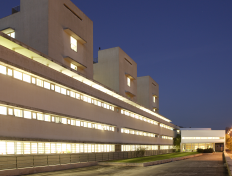Titulo Estágio
Heuristics for Dynamic Soundscapes in Interactive Contexts
Área Tecnológica
Interação com o Utilizador
Local do Estágio
Coimbra
Enquadramento
Game Sound Design is an area we have invested significantly in the past years having developed a Pattern Language for Sound Design in Games (www.soundingames.com). Sound Design is a hard task in sequential media like cinema. In digital games it is made even harder by the fact that sound composition needs to be considered in the interactive context that is open to redefinition by player actions.
Current engine support for sound mostly focus on sound reproduction and mixing techniques, possibly considering positioning and specificity of several sound sources as well as effects that change over time. Game programmers need to manually control each sound source, setting its play timing and modifications according to what’s happening in the game scenario.
Sound Design is a technique that focus at a higher level and considers which sound elements serve each semantic purpose, as well as how these should be combined to produce desired effects. Soundscape design involves a set of concepts and methodologies that try to support a holistic perspective of sound design in context and has been the foundation for developing the pattern language and an innovative sound engine prototype that implements a novel approach to game audio control. In this project we intent to develop further this sound engine to support and test a set of heuristics for managing dynamic soundscapes in interactive scenarios.
Objetivo
This project follows a Design Research approach, and will aim at the extension of our soundscape engine with the implementation and testing of a set of heuristics for soundscape composition, with the following outcomes:
a) definition of a set of soundscape composition/management heuristics;
b) implementation of the heuristics set based on our current prototype;
c) building a demo interactive scenario to validate heuristics’ results;
Plano de Trabalhos - Semestre 1
A1. (M1-M3) State of the art research - research and document the relevant SoA, publications and software review, for the study of the problem at hand;
A2. (M2 - M3) Detailed proposal - detailed characterization of the problem to be solved stating specific goals and requirements, assumptions and milestones for the rest of the project;
A3. (M3 - M4) Initial Design - identification of quality attributes, and architectural drivers and initial design for the proposed solution, including interaction models and user interface draft
Plano de Trabalhos - Semestre 2
A4. (M5 - M10) Prototyping - implementation and testing of a working prototype, tuning or corrections based on evaluation results
;
A5. (M9) Evaluation - definition of evaluation criteria and method, performance or evaluation and analysis of results
;
A6. (M10 - M11) Statement of Learning - production of paper/thesis with process report and reflection on knowledge production
Condições
Estágio a realizar em ambiente laboratorial no CISUC com integração com projecto em curso e com a possibilidade de atribuição de bolsa de 6 meses.
Orientador
Licinio Roque
lir@dei.uc.pt 📩
